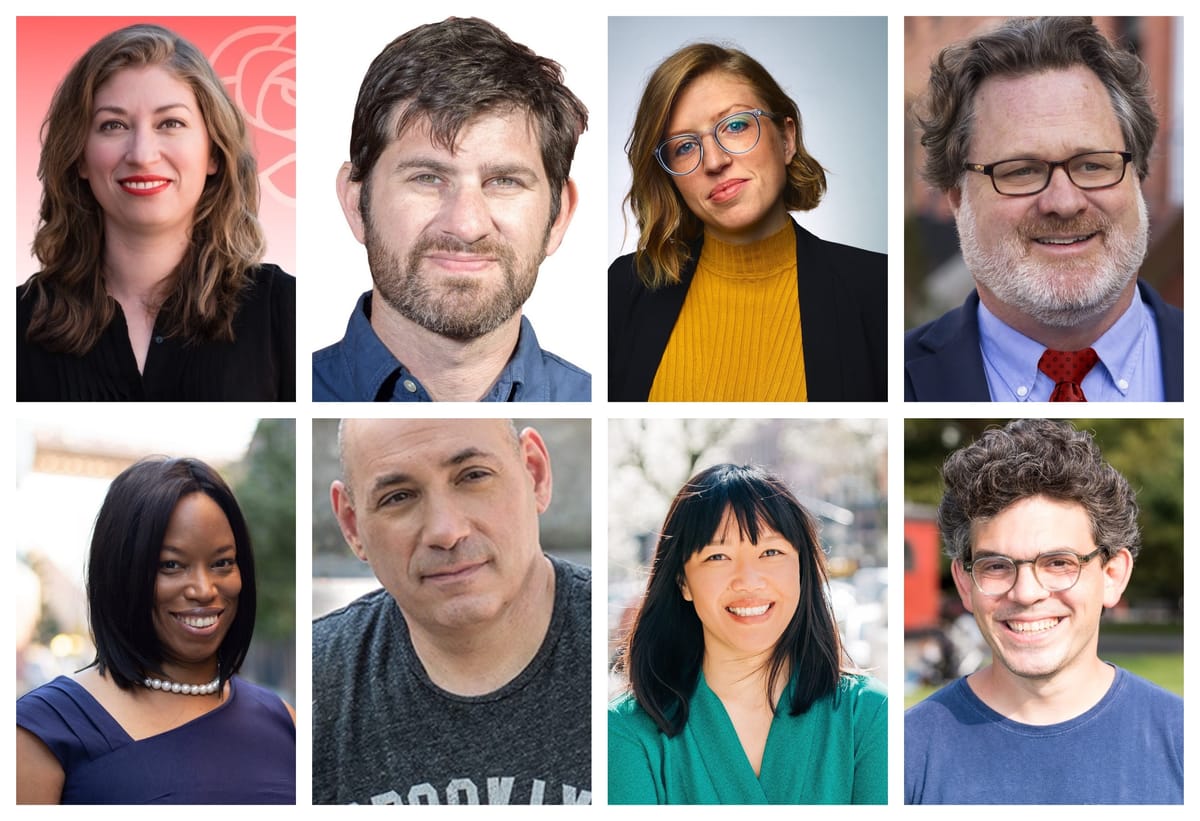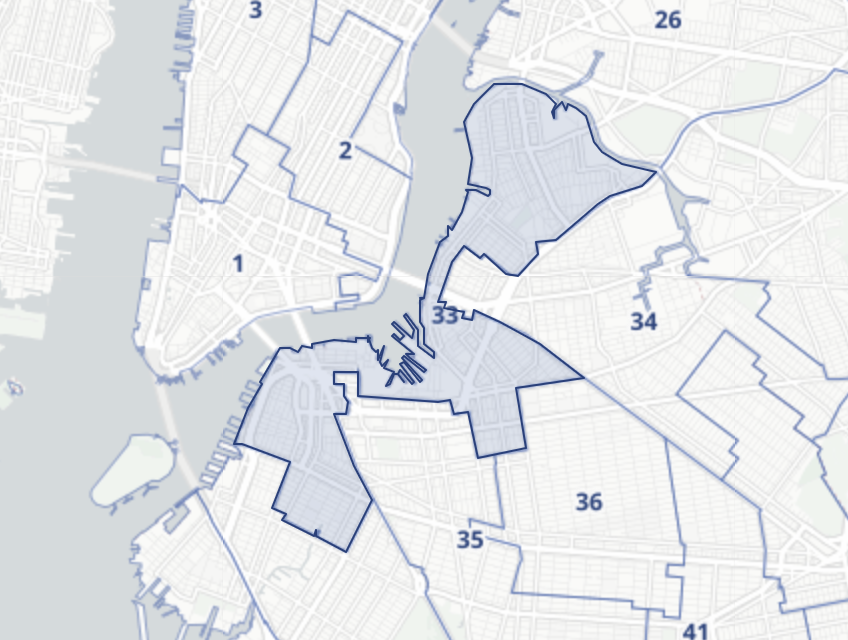North Brooklyn Council Candidates Talk Parks and Public Space


Candidates seeking to represent north Brooklyn in the City Council laid out their plans to improve the area’s parks, public spaces and environment at a virtual forum last week. While all of the candidates said they support increasing funding for the city’s Parks Department, they articulated different visions and priorities that sometimes faced pushback from attendees.
Across the city, parks became much-needed refuges for New Yorkers during the coronavirus pandemic. But the Parks Department’s budget was cut 14%—or $84 million—in Mayor Bill de Blasio’s 2020 budget, the second largest cut to any city agency. Activists have launched a “Play Fair” campaign to restore and further grow parks funding as a portion of the city budget.
The north Brooklyn neighborhoods of Williamsburg and Greenpoint also face unique additional challenges, including a war over Greenpoint’s Open Streets program and a 15-years-and-counting wait for Bushwick Inlet Park and Box Street Park, which were promised as part of a 2005 rezoning of the area but remain unfinished.

Eight candidates for District 33 filled out detailed questionnaries addressing issues ranging from parks financing to climate resiliency to waterfront needs. Organizers from the North Brooklyn Open Space Coalition—a collection of local nonprofits—then followed up on those answers in a two-hour live event.
Below are some of the highlights. (Three candidates for District 34 also participated in the event, but for the sake of brevity, we’ve focused on the more competitive and crowded District 33 race here.)
Adams suggests taking legal action for overdue parks
While all the candidates running for District 33, which stretches from Boerum Hill and Brooklyn Heights to South Williamsburg and Greenpoint, said they would push for the completion of Bushwick Inlet Park, only one threatened legal action.
“We are owed multiple parks,” said Elizabeth Adams, a staffer for the district’s outgoing Council Member Stephen Levin, referring to unfinished green spaces promised by the city during the 2005 rezoning.
“We have three in the district that we have been waiting for 15 years,” she said, “I think we need stronger advocacy and approach from our elected officials. And I would consider taking legal action in the form of a lawsuit to get the parks that we owed.”
Restler calls Bushwick Inlet Park his “top funding priority”
District 33 candidate Lincoln Restler, who currently works as Chief Strategic Officer for the St. Nicks Alliance, told forum attendees that “if there was a metric that I hope to be measured on, it’s how much new green space, how much new open space we develop.”
Restler called Bushwick Inlet Park his “top funding priority in north Brooklyn,” and said he would work to secure funding commitments from the City Council Speaker, the Borough President, and state elected officials from the area.
“Conservatively, we should be able to secure tens of millions of dollars in capital funding from local elected officials and then take that commitment to the mayor and say, ‘you will do the remainder,’” Restler said.
“If sweetness doesn’t work, we will take as combative approach as need be,” Reslter continued. “And the next mayor better damn follow up on the promises made by his or her predecessors and we’ll do everything we need to do to make it happen.”
Potosky proposes a North Brooklyn sea wall, but faces pushback
In his pre-forum questionnaire, District 33 candidate Toba Potosky, a sound engineer, called for the creation of a north Brooklyn seawall, a coastal barrier intended to protect the borough from flooding. Such a structure is currently being built along Staten Island’s East Shore and has been proposed elsewhere in the city.
“District 33 suffered greatly from Superstorm Sandy,” Potosky wrote. “We need a sea wall from Greenpoint to Red Hook and we need it now.”
But his idea received pushback from the event’s moderator, former Council Member Diana Reyna. “A sea wall would cut off those same communities from their waterfront and create other problems,” she said. “Do you have other plans for protecting communities that integrate more human and ecologically-friendly options?”
Potosky nevertheless defended the idea, saying “the polar caps are melting, sea level is rising, we have to plan for that.”
“Any kind of sea wall that we’re looking at to protect the waterfront,” he said, “has to be integrated with sea life, and it has to be done smartly.”
Solitaire commits all his discretionary funding to participatory budgeting, but attendees are unimpressed
Several candidates agreed to commit at least 1% of their own discretionary funds to parks-related projects. But District 33 candidate Ben Solotaire, who, like Adams, works for incumbent Council Member Levin, did not. Instead, he plans to commit 100% of his discretionary funding to participatory budgeting, in which community members vote directly on how to spend public money.
“I would say that parks are a main beneficiary of participatory budgeting quite often,” Solitaire said, “but I would want to hear how the community wants to spend the money.”
That answer did not sit well with several forum attendees, some of whom pointed out that no public space projects won funding in District 33’s latest round of participatory budgeting.
“Not committing to 1% is like saying we don’t deserve the bare minimum,” Laura Hofmann of the St. Nicks Alliance, one of the forum’s co-sponsors, wrote in the Zoom chat.
Sherman takes a swipe at major proposed waterfront development
The real estate developer Two Trees, which was behind the creation of Williamsburg’s Domino Park, has proposed a massive development along the neighborhood’s waterfront that would build two enormous towers with over 1,000 housing units along with office space, a pool and a public beach.
The developer has pitched the project, called River Ring, as “a new model for urban waterfront resiliency.” It requires land use changes that would have to be approved by the local Council Member.
But candidate Stu Sherman, an attorney, doesn’t seem inclined to support it.
Responding to a question about privately-owned public spaces (POPS), which often allow developers to build more in exchange for providing open space, Sherman said “if there’s an opportunity to get green space through a POPS, I’m not adverse to it, but I am reluctant to let developers use that as leverage to get their developments done.”
“I think we’re seeing that right now with Two Trees on River Street,” he continued, “in which they presented a giant, luxury development as a parks plan, as opposed to what it really is.”
“We need to be taking control over our public spaces and building publicly-accessible, public parks and not letting developers leverage that and then break their promises with us,” Sherman said.
Some candidates criticize public-private partnerships…
Several other candidates expressed ambivalence about the role of private funding in parks development.
“While I would not discourage them, I think the city often gets the short end of the stick when these deals are made,” wrote candidate Sabrina Gates.
Victoria Cambranes had harsher words for public-private partnerships, which she said “are used for greenwashing and for building giant towers” and make use of “tenets of architectural intimidation which I believe are extremely racist.”
But immediately after that statement, when explaining “how we’re going to find $100 million for Bushwick Inlet Park,” she cited Brooklyn Bridge Park as a “very successful” model, even though that park was itself created and run by a public-private partnership funded through the development of nearby real estate.
“While I believe that the end result of Brooklyn Bridge Park, in terms of its resiliency, is an excellent example of how we should be doing a resiliency design up here in Greenpoint, I believe the funding model for how it was created is the wrong model,” Cambranes said, confusingly. “It should be part of our capital appropriations budget.”
….while others embrace them
Candidate April Somboun, a communications strategist, was perhaps the most amenable to public-private partnerships.
“It’s imperative that we leverage philanthropic, nonprofit, and private resources to help us fund the parks department,” she wrote in her questionnaire.
Among other ideas, she proposed selling park naming rights to corporations for an annual fee, and suggested a matching funds program for individual New Yorkers to help fund green spaces.
“Wouldn’t be cool if we got the people, the residents of New York City, to pitch in a dollar, two dollars, and it’s matched by the city every single time toward the parks?” Somboun suggested at the forum. “I think that we have to think differently if capital money isn’t coming in.”
Not all attendees agreed.
“This community has been fighting and working for these open spaces for decades,” wrote resident Kevin LaCherra in the chat. “I absolutely don’t think it would be cool to ask those same people to donate money back to have it matched by the city. Tax the rich.”





